Art Sunday: Linda McCartney’s Sun Prints
 This unusual book grew out of Linda McCartney’s fascination with nineteenth-century photographic printing processes and in particular with the technique of sun printing developed by W.H. Fox Talbot, founder of the modern photographic process. Sun printing relies on natural sunlight to produce an image on paper brushed with a mixture of minerals.
This unusual book grew out of Linda McCartney’s fascination with nineteenth-century photographic printing processes and in particular with the technique of sun printing developed by W.H. Fox Talbot, founder of the modern photographic process. Sun printing relies on natural sunlight to produce an image on paper brushed with a mixture of minerals.
Early in her career as a photographer, Linda McCartney began to experiment with the technique of sun printing, where natural sunlight is used to produce an image on plain paper treated with a mixture of minerals without a darkroom. Here is a selection of her prints made using this method, in the rich brown & deep blue hues resulting from the process. The effect shown in these photographs, whether richly-hued portraits of family & friends or moody, deeply-shadowed landscapes, is a unique combination of the spontaneity of modern photography & the subtlety of the early printing technique.
FOREWORD by Linda McCartney:
I FIRST BECAME interested in old printing processes when I was living and working as a freelance photographer in New York. I used to spend a lot of time in the Museum of Modern Art where the curator at that time, Alfred Steichen, put on a series of exhibitions of historic photographs which really excited me. Not only were the photographs wonderful, the printing was better than anything I had seen before. The prints had a marvellous etched quality which I immediately wanted to achieve with my own photographs.

Initially I got nowhere when I asked photographic printers if they would help me experiment with old printing processes. I was told that I would need to speak to a chemist and that modern paper was not of good enough quality, being adulterated with synthetic ingredients. But not long afterwards I was introduced to Andra Nelki, a printer who shared my fascination with these old printing processes. Almost at once we started experimenting with sun printing. Mixing the minerals and salts needed for sun printing is a bit like making a cake. Different ingredients and differing proportions of each in the mixture will give different results, as will different types of paper. You have to have fine, rag paper. and we have found and experimented with a wide variety of wonderful hand-made papers to achieve different effects. We started off working in my daughter’s bathroom, using the bath to wash the paper free of residual salts. This is one of the other aspects of sun printing which appeals to me. You can do it at home, you don’t need a darkroom, a safety light or an enlarger and you’re working with raw minerals, not chemicals. It seems to me to be a more natural process, using uncomplicated ingredients and natural daylight to produce an image.
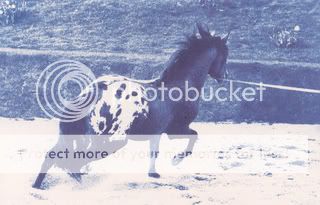
Having said that, sun printing is nothing without a good image. You need a
good strong photograph and a thick contrasty negative to get the best results. What I really enjoy is trying to get the most out of a negative. When I have an image I really love I will experiment in all sorts of ways to get the utmost final print. Sun printing has its drawbacks, such as loss of detail, and I am concentrating now on other processes to get even more detail into the prints.
The quality of light, too, makes a huge difference to the end result. We’ve worked at all times of the year, on hazy days, clear days, damp days and dry days. Spring and summer are best, of course, but sometimes you get the most unexpected results on a day which you might think would not be good. In producing some of the prints for this book we had to work between December and February, the worst time of year in England for daylight of any kind! We decided to experiment in another way, bought a cheap home sunlamp and tried printing with it. The results were fascinating: the blue cyanotype prints worked very well, but the brown, silver-nitrate prints were not at all successful.
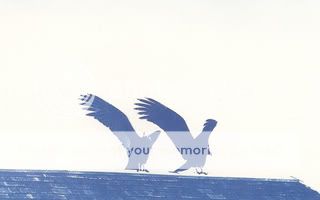
A sun print is naturally always the same size as the negative used to produce it. When I first started experimenting with the process I only used photographs taken on my lO”x 8″ camera because it has a good-sized large negative. The sun prints one sees from the nineteenth century all have a similar static feel because of the long exposure necessary at that time to produce a photograph. Even though I have been told that I use my lO”x8″ camera almost like a 35mm camera, moving it quickly from spot to spot to capture a fleeting image, I still feel it is quite limiting because of the short depth of field and the enormous amount of light needed. Recently I have been making sun prints of photographs taken on 35mm and 2Y4″ cameras, first enlarging the negative to the final size I want. These pictures, such as those on pages 26 to 29, have a spontaneous quality which is quite unlike a nineteenth-century print.

A unique feature of sun printing is the pattern of brush strokes created around the edges of the image. When preparing the paper for developing you brush it with a solution of silver nitrate and distilled water, ensuring that the entire surface covered by the negative is covered with the mixture. Because the silver solution is colourless, the pattern made by the brush strokes is invisible until the print emerges and the results can be quite exciting. It wasn’t long before I realized the creative possibilities of these brush strokes, if put on in a painterly way. Often I don’t want the pattern created by them to intrude on the final image but occasionally, as in the images on pages 62 and 63, it is fun to use the way in which you brush on the solution to create a different type of image altogether. The combination of photography and painting has always appealed to me, particularly in the work of Robert Rauschenberg. It is a mixed-media technique I have experimented with before, but I feel with these sun prints I have come close to capturing the effect I am seeking.
The images in this book are a selection of the prints I have produced since I started sun printing a few years ago. The process has great potential and I find that the more I learn about it the more interesting the results I can achieve. Nowadays the technology of photography is so advanced that really one can do anything. Using an old printing process gives a picture that special quality that I find so interesting. In the end, though, it is the strength of the original photograph which really counts.
Linda McCartney
Sussex, May 1988
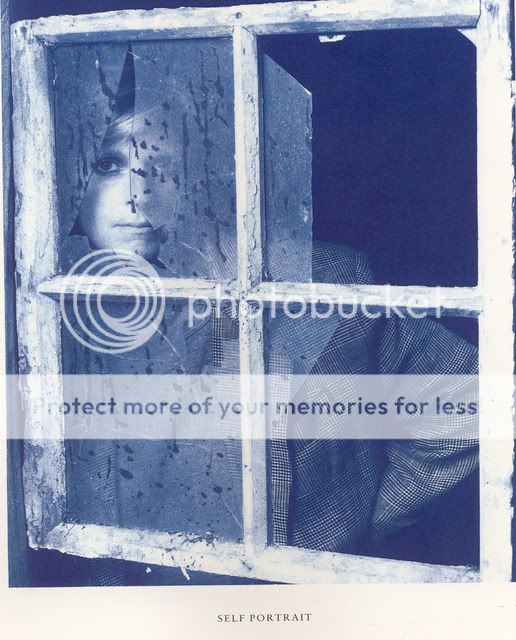
Self Portrait
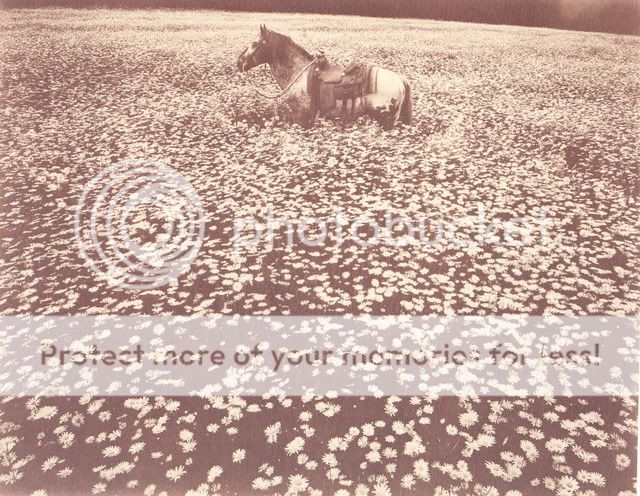
Lucky Spot in Daisy Field

Still Life
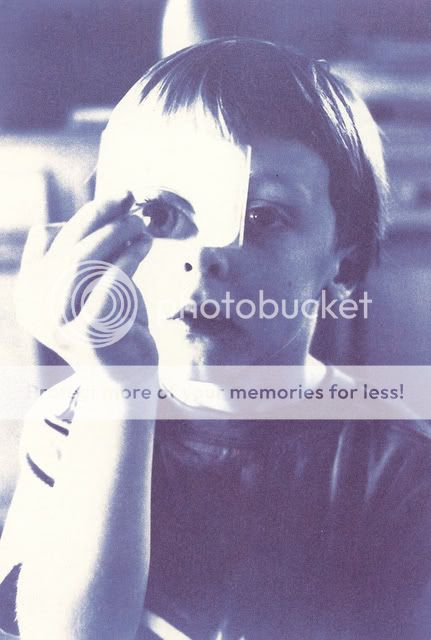
Eyeglass
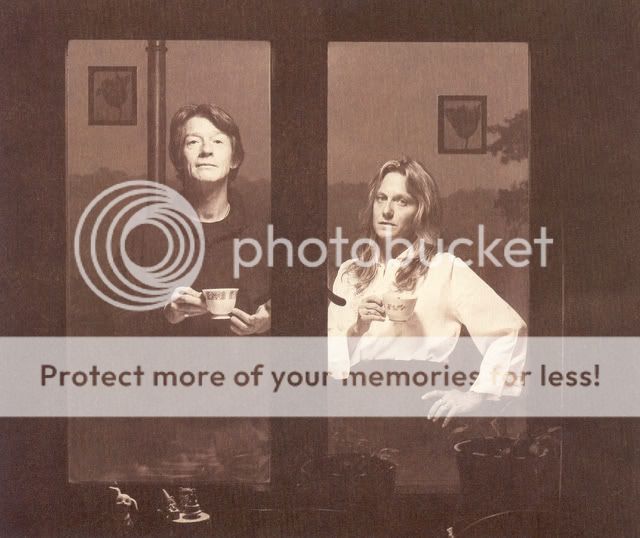
John Hurt and his wife
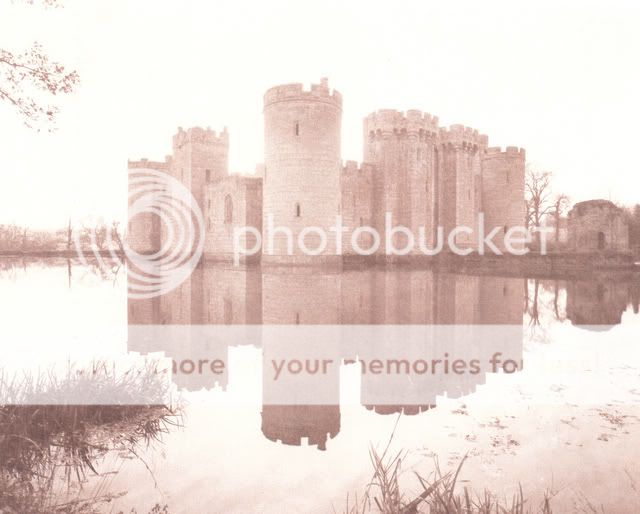
Bodium Castle
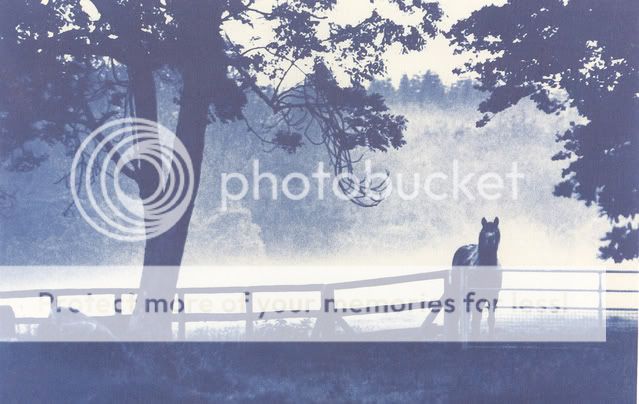
Shadow in the Paddock
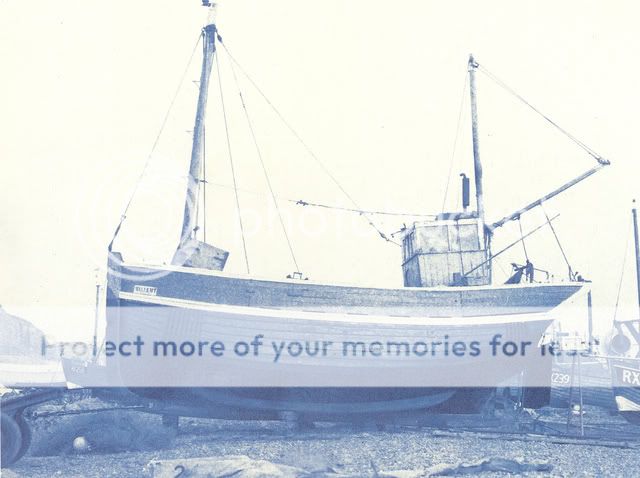
Valiant, Hastings
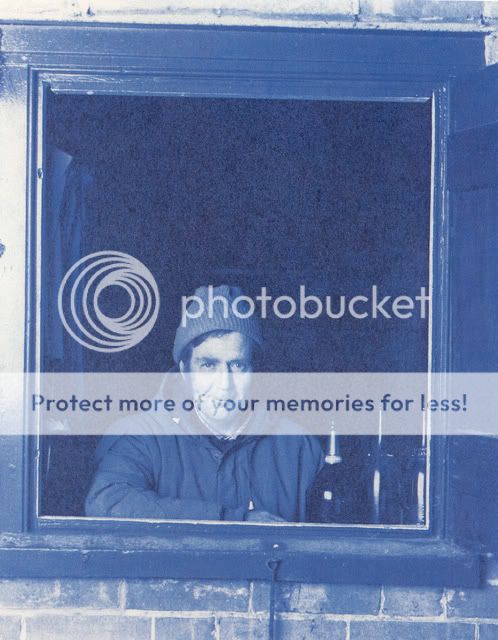
Man in Window
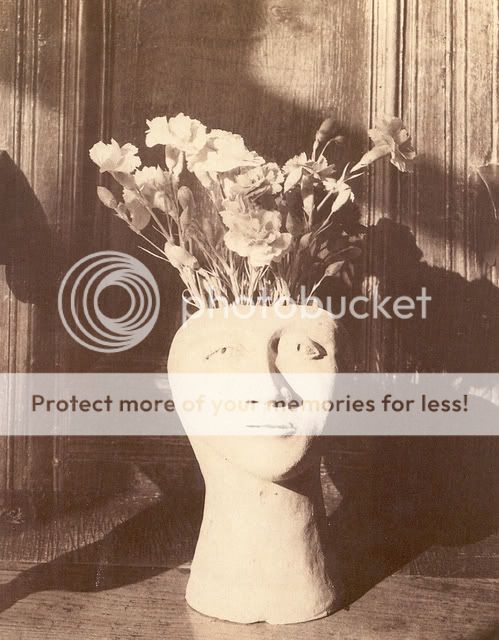
Mary’s Pot

Earl Falconer
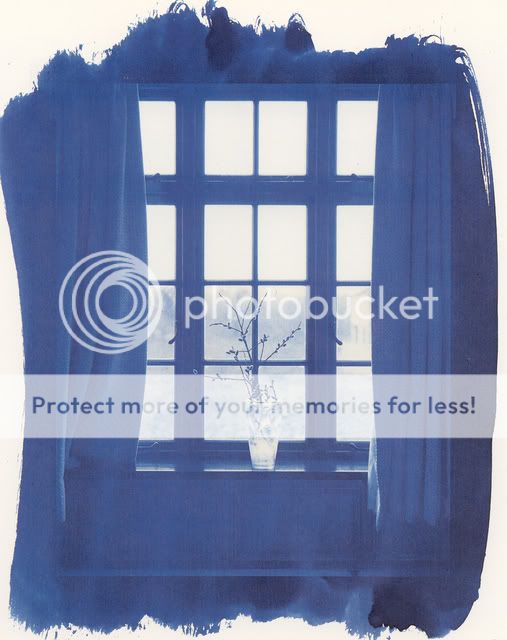
Pussy Willow
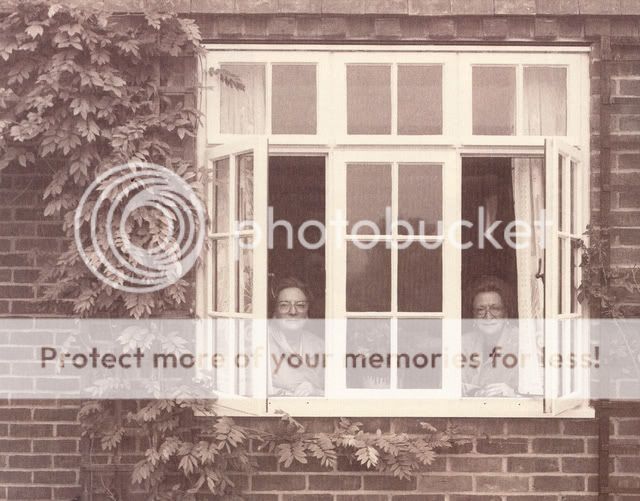
Twins
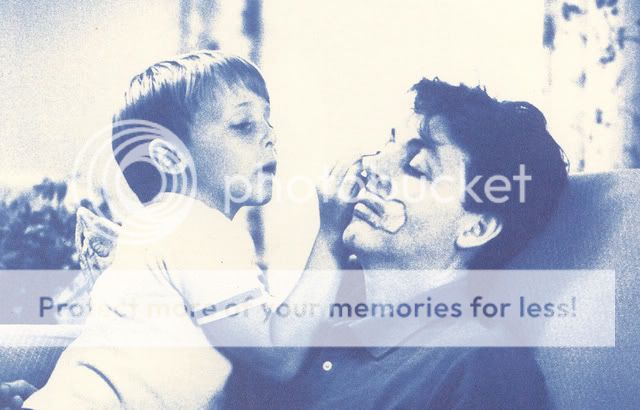
Face Painting
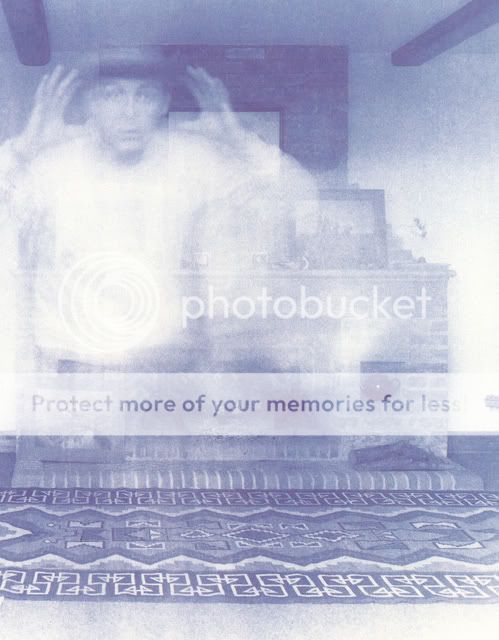
Ghost

Terracotta Horse

Magnified
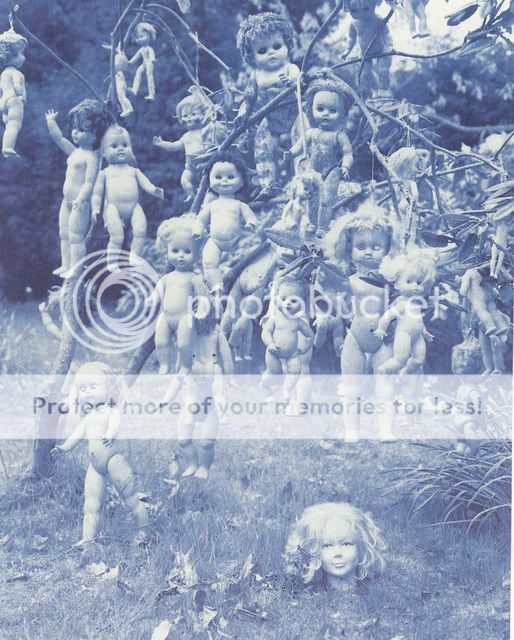
Dolly Tree
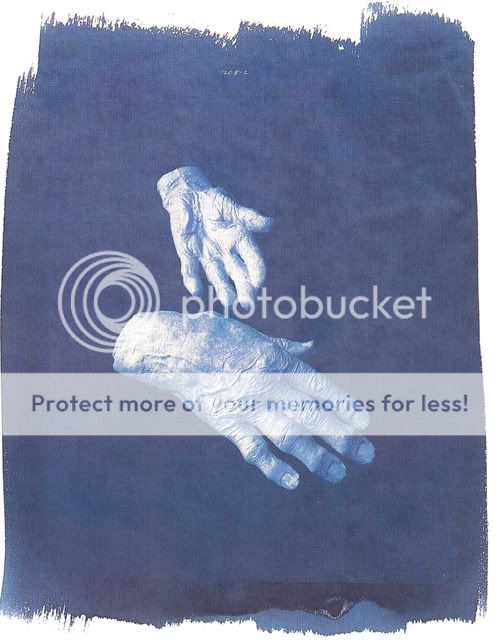
Healing Hands

Monkey Boy
This post is dedicated to my friend, Nemo, who told me about Linda’s Sun Prints. Thanks, Nemo !
|
lauritasita wrote on Oct 18, ’08
If anyone is interested in actually doing some sun printing, Linda’s book also has a list of materials and how to do it, but even though it’s easy, it does take some practice to get the effect you want.
|
|
lauritasita wrote on Oct 18, ’08, edited on Oct 18, ’08
I believe the blonde boy who appears on the last photo and on the cover of the book (also in the photos, “Face Painting” and “Eyeglass”) is James McCartney, the son of Linda and Paul.
|
|
lauritasita wrote on Oct 18, ’08
I thought this technique was very interesting.
|
|
lauritasita wrote on Oct 19, ’08
Thanks for telling me about this book, Nemo. You made my day, too !
|
|
starfishred wrote on Oct 19, ’08
THIS IS REALLY INTERESTING THANKS
|
|
forgetmenot525 wrote on Oct 19, ’08
This is so interesting, I didn’t know she used this old technique. The Talbot Fox method is the method developed by Hill and Adamson who I did Art Sunday on a couple of weeks ago. I find it fascinating to think how far photography has come since the beginning.Thanks Laurita
http://forgetmenot525.multiply.com/journal/item/187/Art_Sunday_Kelvingrove_Art_Gallery_and_Museum._ |
|
lauritasita wrote on Oct 19, ’08
Thanks for visiting, Loretta. I didn’t know she did it this way either. I didn’t even know about this book until Nemo told me. It’s fascinating isn’t it ? She was into very natural methods of doing things, so it does not surpirse me.
|
|
lauritasita wrote on Dec 23, ’08
Taylor14, thanks for visiting. Feel free to copy any of the photos you like from here. I had to return the book to the library.
|

Comments
Art Sunday: Linda McCartney’s Sun Prints — No Comments
HTML tags allowed in your comment: <a href="" title=""> <abbr title=""> <acronym title=""> <b> <blockquote cite=""> <cite> <code> <del datetime=""> <em> <i> <q cite=""> <s> <strike> <strong>